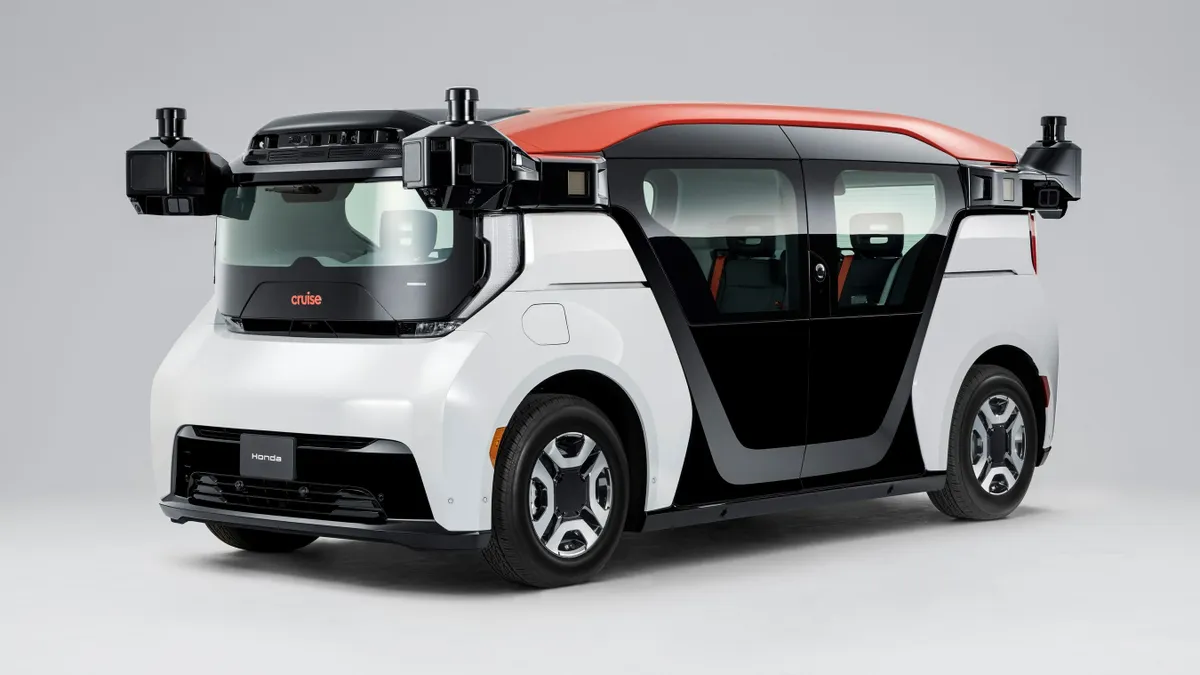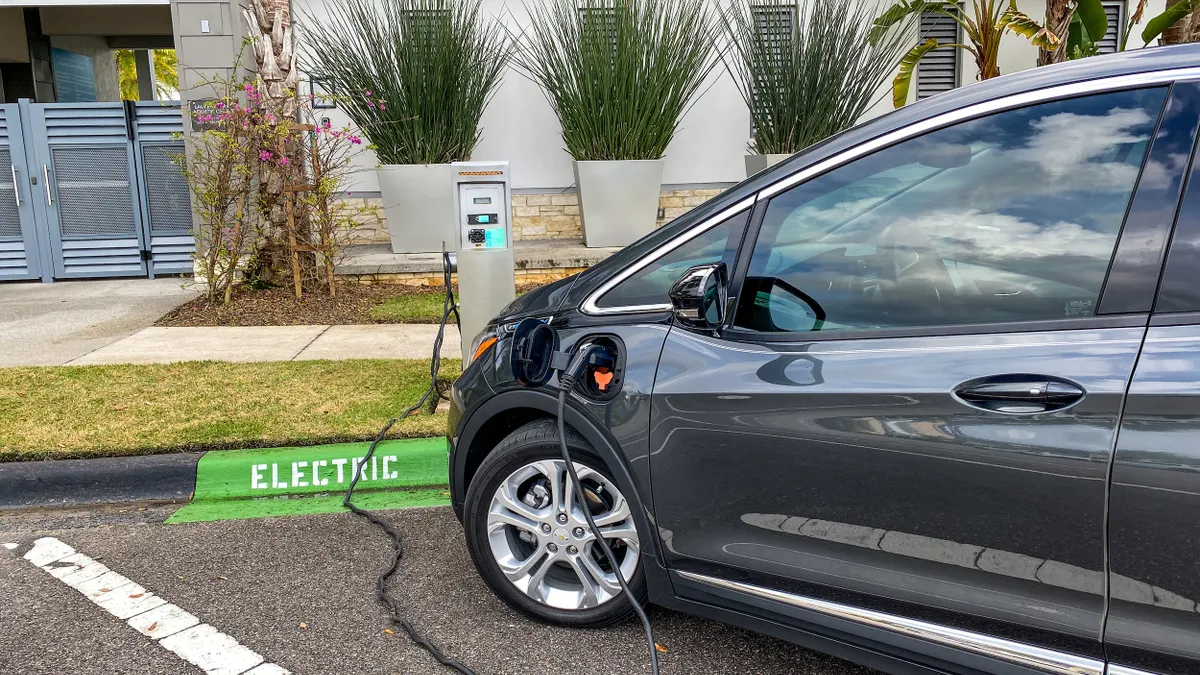Smart city technologies might seem futuristic and exciting, but they're often part of the age-old chicken-and-egg argument of life imitating art, or vice versa. A number of the much-hyped current technologies made appearances in fiction — often science fiction — before their real-life debuts in smart cities.
Smart Cities Dive has compiled a list of 10 times fiction predicted smart city advances. These examples might not be the very first known mentions of such technologies in all cases, but they are among the most prominent references.
"Wandl the Invader" (book, 1939) — Predicted: Hyperloop transportation
Innovative transportation is a frequently addressed theme in science fiction, especially considering how often the stories involve space travel. This book by Ray Cummings envisioned high-speed transportation in vacuum cylinders, à la pneumatic mail tubes.
This is a rudimentary example of the hyperloop, Elon Musk's concept for underground pod transportation inside a partial vacuum tube system. Although hyperloop has yet to officially come to fruition, preliminary construction on testing facilities has launched in France, joining those in Nevada and California. Hyperloop designs even mimic the book's idea of only having a few people travel in each small pod, as opposed to running an entire train through the vacuum tube system at once.
"1984" (book, 1949) — Predicted: video surveillance, data collection/analytics
Elements of the dystopian novel's language — such as "Big Brother" — have been well integrated into modern society's vernacular. Although it depicts negative elements of technology, it nonetheless proved visionary in predicting future technology and related practices.
George Orwell's characters were monitored by "telescreens" both at home and in public that transmitted sound and video to Big Brother. Similarly, modern cities use public video surveillance for numerous purposes, including law enforcement, emergency responses and optimizing traffic flow. But cities also must strike a balance between beneficial surveillance and invading residents' privacy, as highlighted in the book. Oakland, CA is among the municipalities moving forward with strict regulations governing the city's use of surveillance technology.
The book also delved into data collection and a primitive form of data analytics, in that residents' personal information constantly was collected and analyzed for compliance. Those who weren't in compliance with the rules were punished. Interestingly, many people drew parallels between the book's data collection methods and the controversy surrounding the National Security Agency (NSA) when it was exposed as collecting information from U.S. citizens' emails and phone calls; sales of 1984 spiked in 2013 during the NSA dustup.
"Stand on Zanzibar"(book, 1969) — Predicted: electric cars
The main theme in John Brunner's book is that the world's population is growing rapidly and overpopulation brings negative consequences, some of which the book aims to predict. Notably, modern municipal leaders and planners work to avoid some of the named consequences, such as widening social divides, to prevent their city's de-stabilization.
The book envisions a world where people increasingly travel in cars powered by rechargeable electric fuel cells. Although widespread use of electric vehicles (EVs) has had several stops and starts in the United States over the past 20 years, it's really picking up steam now.
Some examples include GM promising to release more EV models, Atlanta passing legislation requiring EV charging infrastructure in new buildings, the Department of Energy is funding fast EV charging research and a plethora of cities adding both public charging stations and electric battery-fueled public transportation. One main difference is that real-life EV acceptance is a bit behind the book, which was set in 2010.
"Knight Rider" (TV show, 1982) — Predicted: artificial intelligence, autonomous vehicles
The 1980s were chock full of attention to Trans Ams, but KITT was the most coveted by people young and old. The vehicle used artificial intelligence to communicate verbally with its owner, Michael Knight. That was revolutionary considering how few cars at the time had onboard computer systems, which are standard in modern vehicles.
KITT not only communicated with Michael, but also with its surroundings. It could operate its own systems and override human operations to become a fully autonomous vehicle. KITT's functions resemble in many ways the modern autonomous vehicles (AVs) being tested around the world and how they communicate with their surroundings via sensors to influence operations. However, thus far the artificial intelligence is not advanced enough to carry on full conversations with humans.
"WarGames" (movie, 1983) — Predicted: cybersecurity, hacking
Nearly a decade before most people had even heard of the internet, much less used it, "War Games" exposed the dangers of a connected world, specifically that one small technical misunderstanding nearly caused a global nuclear war.
The main character is a hacker, which is a commonly used term today, but 35 years ago the concept was largely unknown. The movie offered, debatably, the first ever mainstream reference to the term "firewall." Although watching the movie now uncovers some discrepancies in how connectivity and hacking actually work, it did illustrate the need for cybersecurity, especially for government systems.
"Neuromancer" (book, 1984) — Predicted: cyberspace, hacking
William Gibson's book published shortly after "War Games" was released and included a common theme: The main character, Case, is a hacker. Two years prior, Gibson released a short story that is credited as the first to coin the term "cyberspace," which he folded into Neuromancer. The novel also introduced the concept of virtual reality headsets, and artificial intelligence takes center stage throughout.
The internet and connectivity serve as the backbone for nearly all smart city technology, and protecting against hackers who could disrupt the entire system therefore is essential. Cities are starting to look at new, more secure developments such as blockchain-based cybersecurity to avoid large-scale hacks like the one that brought Atlanta's system to its proverbial knees.
"Back to the Future Part II" (movie, 1989) — Predicted: Drones
This movie introduced a slew of iconic technologies, some of which worked out while others remain just ideas. Drones are the technology most pertinent to the smart cities space. During the portions of the movie set in the future — in 2015 — news organizations use photo- and video-capturing drones called "hovercams" to report on events and transmit live news feeds.
By the time 2015 rolled around in reality, drones were all the rage as a hot, new tech item. Their use expands constantly and they're currently employed in a variety of smart city applications including inspecting infrastructure, detecting gun shots, chasing criminals and assessing traffic accidents.
"Total Recall" (movie, 1990) — Predicted: artificial intelligence, autonomous taxis
Similar to "Knight Rider," "Total Recall" features an autonomous vehicle (AV) that communicates with human passengers. Granted, the communication with Johnny Cab, the oft-maligned and "disturbing" humanoid robot that operates the car, is far less smooth than with KITT and creates frustration.
Total Recall advances the AV concept and makes it applicable to areas other than just personal vehicles. A number of companies like Nissan and GM are testing autonomous taxis and AV ride-sharing services, and cities including Houston, TX and Columbus, OH recently launched pilot programs to test AV shuttles as a greater mobility option.
"The Fifth Element" (movie, 1997) — Predicted: 3D printing
Scientists in the movie use a high-tech 3D printer to construct Leeloo's body piece-by-piece from the inside out using recovered DNA.
3D printers were beginning to emerge in niche markets during the 1990s, but the early models were a far cry from today's advanced machinery. Although real-life 3D printers thus far have not advanced to the point of creating entire living beings like in "The Fifth Element," they hold promise for constructing cities' infrastructure including bridges, bus stops, offices and homes.
"Minority Report" (movie, 2002) — Predicted: predictive analytics, targeted advertising
The movie featured numerous futuristic technologies, but one that particularly gained notoriety for being simultaneously creepy and fascinating is the targeted advertising. Characters' retinas are scanned when they pass billboards and various kiosks and then the technology caters the ads to each person and addresses them by name.
More cities are installing interactive kiosks that offer Wi-Fi and a variety of information, like maps, that could be helpful to passersby. Different cities fund the devices and their operations in different ways, and New York's much-celebrated LinkNYC kiosks are among those funded through advertising. But as the kiosks interact with people's mobile devices they also collect information, including IP addresses and mobile device type, and use the collected, anonymized data to influence advertising on the kiosks. This is similar to the technique in the "Minority Report," except that the real-life kiosks scan a person's phone instead of their retinas.



















